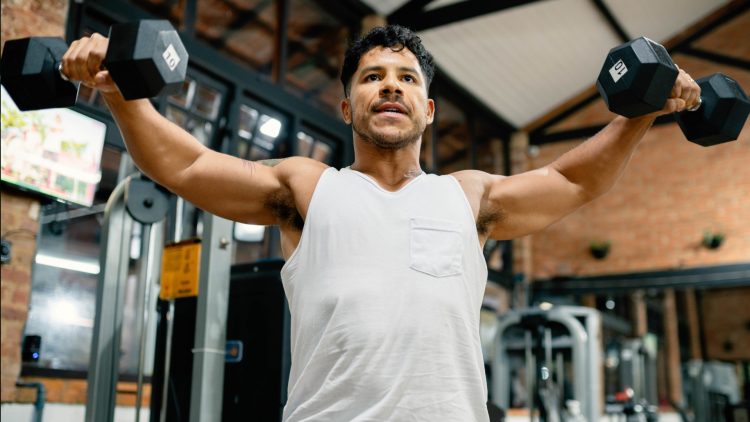Rewilding the Nervous System
Long before gyms, mirrors, or reps, the human body expressed itself in primal ways—crawling, rolling, crouching, and leaping. Today, these animalistic movements are being revived not as fitness trends, but as therapeutic tools grounded in neuroscience. As mental health discourse shifts toward body-based regulation, primal movement is finding new relevance as a natural pathway to healing—one that communicates directly with the nervous system.
Understanding the Polyvagal Framework
At the heart of this resurgence is the polyvagal theory, developed by Dr. Stephen Porges. This theory describes how our vagus nerve acts as a bidirectional communicator between brain and body, shaping our emotional responses and stress levels. It proposes that we have three primary states: sympathetic (fight/flight), dorsal vagal (freeze/shutdown), and ventral vagal (social engagement and safety). Movement, particularly the type that mimics natural instinctual behavior, can powerfully nudge us into the ventral vagal state—where healing becomes accessible.
Why Primal Movement Works
Primal movement invites us to move the way early humans—or animals—might in the wild: intuitively, reactively, and often low to the ground. This includes bear crawls, quadrupedal locomotion, rolling, twisting, hanging, or transitioning weight through the hips. These motions gently activate the spine, hips, and core—the very centers where stress and trauma often somatize. Unlike rigid exercise routines, primal movement is fluid and responsive, which mirrors the body’s own language of safety.
Stress Reset Through Sensory Feedback
The vagus nerve responds to pressure, temperature, rhythm, and stretch. Crawling stimulates pressure points in the palms and feet. Rolling initiates rhythmic vestibular feedback. Quadrupedal patterns stretch the diaphragm and thoracolumbar fascia, all of which provide sensory cues to the brain that it’s safe to relax. Each of these subtle signals downregulates the stress response, gently guiding us out of survival mode.
Emotional Processing in Motion
Primal movement is not just a physical workout—it’s an emotional discharge valve. When people engage in animal-like locomotion or expressive somatic practices, they often notice spontaneous releases: shaking, sighing, even tears. This is the nervous system unwinding stored charge. By moving without expectation or aesthetic performance, participants enter a flow state, accessing the same regulation zone used in therapies like EMDR, somatic experiencing, and breathwork.

Bringing Awareness to Instinctual Patterns
In our modern lives, we suppress instinctual reactions: the urge to run, curl up, or rock. Over time, this repression disconnects us from our bodies. Primal movement helps restore these expressions as valid and safe. Therapists using trauma-informed movement protocols often report that once clients begin moving on all fours or allowing animalistic gestures, they recover access to emotions and memories previously locked away.
Scientific Support for Movement-Based Regulation
Studies in sensorimotor psychotherapy and body-based trauma treatment show that physical movement increases heart rate variability (HRV), a key biomarker of nervous system resilience. Movements that activate core stability and diaphragmatic rhythm improve vagal tone—directly enhancing emotional regulation. Even more striking: movement practices that require coordination across both brain hemispheres (like crawling or rolling) can enhance prefrontal cortex function, improving mood, impulse control, and cognitive flexibility.
Modern Therapies Blending the Primitive and the Clinical
Integrative therapists are now combining primal movement with polyvagal-informed therapy, breathwork, and mindfulness. In practices like “somatic animal flow,” clients may begin with slow, instinctual movements before integrating verbal processing or journaling. The result? A multidimensional reset of body, mind, and emotion. Some practitioners call it “rewilding therapy”—a return to embodied intelligence that predates verbal cognition.
From the Jungle to the Studio: Accessibility and Adaptation
You don’t need to train like a panther or practice on forest floors. Primal movement can be adapted to indoor spaces, small rooms, or even seated positions. Gentle forms like baby crawling, rocking hips, or gently circling the spine in a chair can have surprisingly profound effects. It’s about intent, breath, and the willingness to move outside of mechanical habits.
Group Healing Through Animal Play
In group settings, primal movement often invites laughter, curiosity, and bonding. Adults reengage their playful nervous systems—the same state where emotional safety, creativity, and social connection flourish. This is the ventral vagal network in action: when we move like animals together, we become more human. Workshops that incorporate eye gaze, synchronized crawling, and mirrored animal poses have shown improvements in social anxiety and interpersonal trust.
Daily Integration for Nervous System Hygiene
Just five minutes of crawling or spinal spiraling in the morning can shift your baseline from reactive to resilient. Therapists now prescribe these movement breaks between therapy sessions, Zoom meetings, or long drives. Over time, the body builds a repertoire of calming patterns it can default to instead of panic, freeze, or fatigue. It becomes second nature—just like it once was.
A New Frontier in Self-Regulation
As society grows increasingly sedentary and screen-tethered, primal movement offers an antidote: non-linear, intuitive, somatically rich embodiment. It’s not about mimicking animals for novelty—it’s about honoring the mammalian intelligence already within us. When we crawl, roll, shake, and sigh, we tell our nervous systems the threat is gone. We come home to ourselves.











































